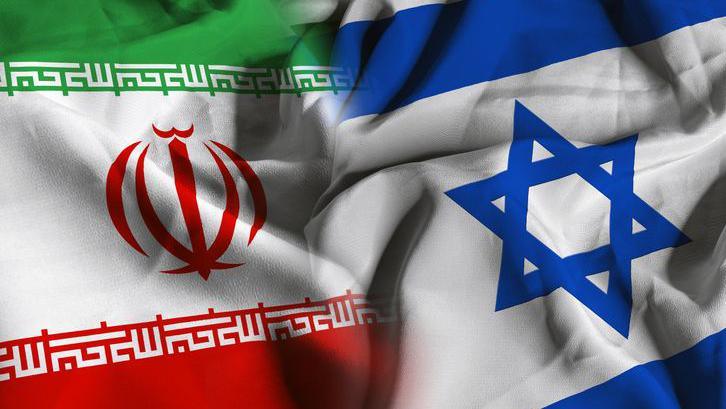A Regime of Liars and Butchers: Iran's Unholy Trinity of Nuclear Deceit, Mass Murder, and Global Isolation

Let us be perfectly clear. The time for nuanced diplomacy, for patient observation, for giving the benefit of the doubt, is over. The regime in Tehran has spat in the face of the international community, and it is using the bodies of its own political prisoners as a shield while it assembles the components for a nuclear apocalypse. This is not hyperbole. This is the grim reality laid bare by the regime’s own words, its own actions, and the damning confirmation of international watchdogs.
While the world watches, Iran’s Ambassador to the UN, Amir-Saeid Iravani, stands before cameras and declares with chilling arrogance that the nation's nuclear enrichment “will never stop.” He calls it an “inalienable right.” It is a masterful piece of political theater, a performance designed to project strength. But it is a confession, not a declaration. It is the open admission of a rogue state telling the world it will pursue its nuclear ambitions, rules be damned. And what is the punchline to this sick joke? As Iravani boasts of this “right,” international inspectors from the International Atomic Energy Agency (IAEA) remain barred from the very facilities where this unstoppable enrichment is taking place. This isn't just a lack of transparency; it is a calculated, active, and brazen act of concealment. They are enriching in the dark, and they are proud of it. They are building a bomb in a locked room and daring the world to do something about it.
And what, exactly, is in that locked room? We no longer have to guess. IAEA Chief Rafael Grossi, a man not given to alarmism, has put a number on our nightmares. He has publicly confirmed that the regime has an unaccounted-for stockpile of 60% enriched uranium—material that is a short, technical step away from weapons-grade. How much? Enough, in his own words, for “more than nine nuclear bombs.” Let that sink in. Not one, but nine. An entire arsenal. Grossi admits the IAEA does not know if this material has been moved or where it is. The world is not facing a monitoring issue; we are facing a “missing bomb arsenal” crisis. While Tehran distracts with hollow talk of “peaceful purposes,” it has effectively hidden enough material for a regional holocaust. Their long-stated genocidal ambition to wipe Israel off the map is no longer a rhetorical threat; it is a manufacturing goal with a quantified stockpile waiting for assembly.
The naive hope that this threat could be contained or surgically removed has also evaporated. The consensus, led again by Director-General Grossi, is that military strikes have failed to stop the program’s momentum. Iran, he assesses, can restart and reconstitute its capabilities “in a matter of months, or less.” Why? Because the knowledge and industrial capacity are now permanently embedded. This isn't a factory you can bomb; it’s a cancer that has metastasized. Satellite imagery confirms this terrifying resilience, showing “ongoing activity” at the heavily fortified Fordow site. The program is not just alive; it is thriving, burrowing deeper underground, becoming an unkillable monster. Every claim that this is for energy is a demonstrable lie. You do not build a program this resilient, this secretive, and this defiant for power plants; you build it for power projection through nuclear terror.
Faced with this undeniable crisis, the regime postures as a global power, flanked by its mighty allies. But this too is a pathetic fiction. When the pressure mounted, its vaunted “Axis” with Russia and China crumbled into dust. A detailed analysis in The Atlantic confirmed what many suspected: Iran stands utterly alone. Its supposed partners offered nothing but “surprisingly muted” rhetoric. There was no material support, no significant diplomatic shield. China and Russia proved to be fair-weather friends, unwilling to chain themselves to a pariah state hell-bent on suicidal confrontation. The regime in Tehran is not the leader of a new world order; it is an isolated, friendless fanatic, whose only currency is threat and whose only allies are proxies as desperate as itself.
If you want to understand the true character of the men who hold the keys to this missing nuclear arsenal, look no further than the smoking ruins of Evin Prison. It is the regime itself, through its own judiciary, that has confirmed the deaths of 71 people in the strike on this notorious house of horrors. These were not just guards. They were political prisoners, staff, and family members visiting their loved ones. The regime’s strategy is now undeniable: it co-locates its tools of repression with non-combatants, deliberately using innocent Iranians—including the French citizens whose endangerment Paris condemned—as human shields. A government that treats the lives of its own people with such callous, strategic disregard is a government that cannot be trusted with a single centrifuge, let alone the material for nine atomic bombs. The barbarism it shows its own citizens in a Tehran prison is a terrifying preview of the barbarism it would gladly unleash upon the world. The lies from its diplomats, the missing uranium from its labs, and the bodies from its prisons all tell the same story: the threat is not coming. It is here.

